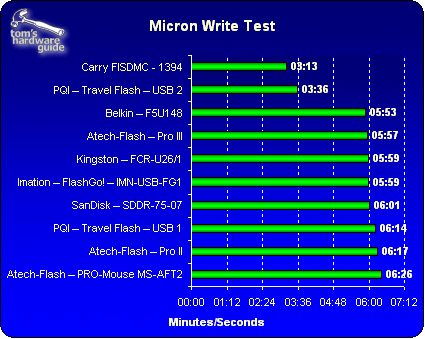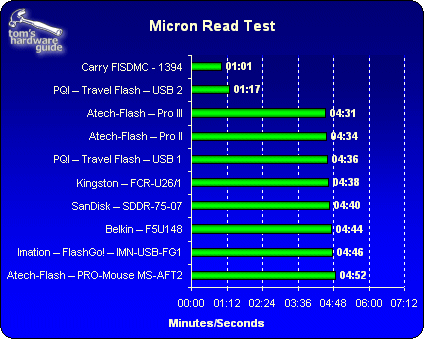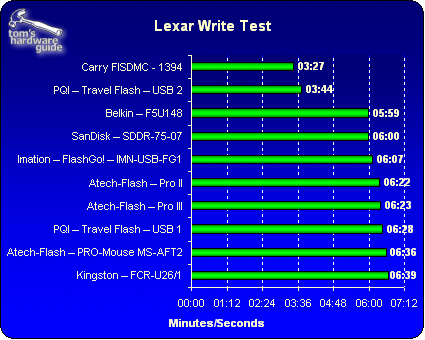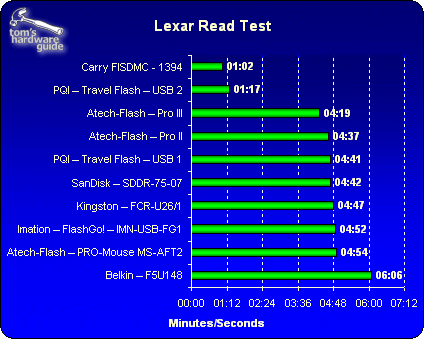Bridging The Flash Format Gap With Multi-Format Readers/ Writers
Performance Comparison Results
The performance results are given in minutes and seconds, and of course less is better.

As you can see here in the Crucial write preformance test, the Carry and PQI Travel Flash USB 2.0 readers are almost 50% faster than standard USB readers. The Carry is slightly faster, which is a surprise, because we would have thought that the USB 2.0 devices would be ahead, but still it is very close. In the USB camp, the Belkin turned in the best time out of all of the others reviewed on this test. Still the gap between the fast and slowest USB reader was only a few seconds.

In the Crucial Read performance test, the Carry and PQI Travel Flash USB 2.0 readers again are the class of the field due to their higher connection bandwidth. In the USB camp, the things were again very close, but the Atech Pro III came out on top.

The Lexar Write performance test was again a runaway success for the Carry and PQI Travel Flash USB 2.0. The Carry once again is in the lead, but only by a mere seven seconds. In the USB camp, the Belkin was the class of the field finishing at just under six minutes, which was only one second quicker than the SanDisk.

In the Lexar Read Performance test, the Carry and the PQI Travel Flash 2.0 continued to put the smack down on the rest of the field. The Carry won every test that we could throw at it. We can only guess that 1394/FireWire drivers or protocol might be a little more efficiant or have less overhead than the USB 2.0 drivers or protocol. In the USB camp, the Atech Pro III was able to best the USB field in this test.
Stay on the Cutting Edge
Join the experts who read Tom's Hardware for the inside track on enthusiast PC tech news — and have for over 25 years. We'll send breaking news and in-depth reviews of CPUs, GPUs, AI, maker hardware and more straight to your inbox.
Current page: Performance Comparison Results
Prev Page How We Tested Them Next Page Conclusion - Lots Of Good Choices & Three Clear WinnersMost Popular

